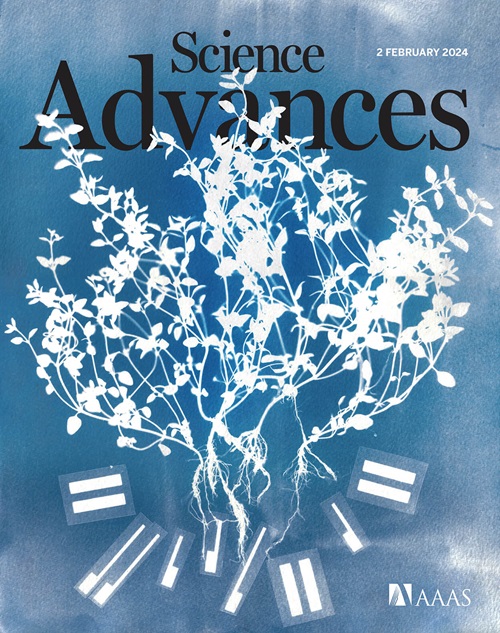Visible-to-infrared photoabsorption in supermolecule-induced Turing-structured perovskite hybrid semiconductors
IF 11.7
1区 综合性期刊
Q1 MULTIDISCIPLINARY SCIENCES
引用次数: 0
Abstract
An emerging family of metal-halide perovskite semiconductors is highly attractive for optoelectronic applications because of their tunable light absorption, long-lived photogenerated carriers, and high defect tolerance. However, their inherent bandgaps limiting the photoabsorption below 1000 nanometers greatly constrain the further development of these materials and their optoelectronic devices. Here, we reported a straightforward strategy to achieving visible-to-infrared photoabsorption covering 630 to 2000 nanometers in inorganic perovskites by incorporating supramolecular crown ethers. Crown ethers enable supramolecular host-guest complexation and the formation of self-organizing Turing structures composed of original perovskites and supramolecular hybrid crystals. The visible-to-infrared photoabsorption is attributed to the interphase electron transitions in the Turing-structured perovskite hybrid matter system. Such visible-to-infrared photoabsorption is successfully translated into a photoelectronic response in an interdigitated photodetector. Our research extends the light absorption and detection capabilities of the perovskite hybrid semiconductors into the infrared region.
超分子诱导图灵结构钙钛矿杂化半导体的可见-红外光吸收
一种新兴的金属卤化物钙钛矿半导体由于其可调谐的光吸收、长寿命的光生载流子和高缺陷容忍度而在光电应用中具有很高的吸引力。然而,其固有的带隙将光吸收限制在1000纳米以下,极大地限制了这些材料及其光电器件的进一步发展。在这里,我们报告了一种简单的策略,通过加入超分子冠醚,在无机钙钛矿中实现630至2000纳米的可见到红外光吸收。冠醚可以实现超分子主客体络合,形成由原始钙钛矿和超分子杂化晶体组成的自组织图灵结构。图灵结构钙钛矿杂化物质体系的可见-红外光吸收归因于相间电子跃迁。这种可见到红外的光吸收被成功地转化为光电响应的交叉光电探测器。我们的研究将钙钛矿混合半导体的光吸收和探测能力扩展到红外区域。
本文章由计算机程序翻译,如有差异,请以英文原文为准。
求助全文
约1分钟内获得全文
求助全文
来源期刊

Science Advances
综合性期刊-综合性期刊
CiteScore
21.40
自引率
1.50%
发文量
1937
审稿时长
29 weeks
期刊介绍:
Science Advances, an open-access journal by AAAS, publishes impactful research in diverse scientific areas. It aims for fair, fast, and expert peer review, providing freely accessible research to readers. Led by distinguished scientists, the journal supports AAAS's mission by extending Science magazine's capacity to identify and promote significant advances. Evolving digital publishing technologies play a crucial role in advancing AAAS's global mission for science communication and benefitting humankind.
 求助内容:
求助内容: 应助结果提醒方式:
应助结果提醒方式:


